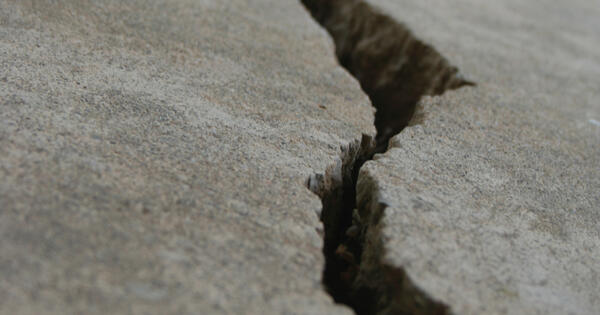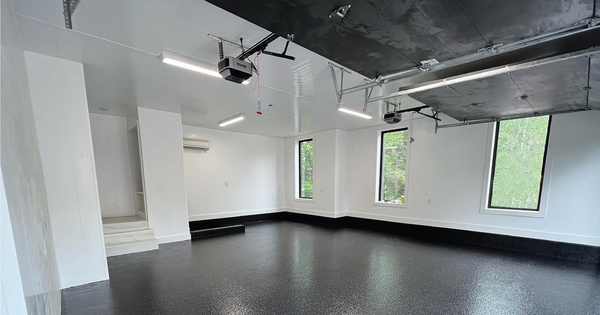A flood can turn your world upside down in an instant. Whether it’s a burst pipe, a storm surge, or a backed-up sewer, the aftermath is always overwhelming. You're trying to salvage what you can, keep your family safe, and figure out what to do next — all while dealing with soaked floors, ruined belongings, and mounting stress. But amid the chaos, there’s one problem that can’t wait: mold.
Mold can start growing fast — sometimes within 24 to 48 hours of water exposure. And once it starts, it doesn’t stop without intervention. It spreads through porous surfaces like drywall, insulation, flooring, and even behind baseboards, quietly damaging your home and posing serious health risks to everyone inside. The sooner you act, the better chance you have at stopping mold before it takes hold.
Before anything else, make sure you’re safe. If there’s standing water, structural damage, or a risk of electrical shock, don’t go back into your home until authorities say it’s okay. Once you can safely enter, your first priority is to dry things out and remove anything that can trap moisture — because every minute counts when mold is involved.
Understanding Mold Growth After a Flood
Once floodwater enters a home, the environment becomes the perfect breeding ground for mold. Mold spores are already floating in the air all around us — indoors and out. But they only become a problem when they land on damp surfaces and find the right conditions to grow.
Mold thrives in warm, humid environments with little airflow. After a flood, water soaks into drywall, wood, carpet, and insulation — holding onto that moisture long after the surface looks dry. If humidity levels remain high and ventilation is limited, mold spores settle in and begin growing quickly — usually within just a day or two.
Keep an eye out for early signs of mold as you begin cleanup. Here are a few indicators it may already be forming:
- Musty, earthy smells — even if you can’t see it, mold often reveals itself by odor.
- Discoloration on surfaces — black, green, or brown spots on drywall, baseboards, or ceilings.
- Peeling or bubbling paint and wallpaper — signs that moisture is trapped behind the surface.
- Warped wood or sagging ceilings — a potential red flag for hidden mold growth.
Understanding how fast mold takes hold and how easily it spreads underscores just how urgent the cleanup process really is.


Immediate Steps to Take After a Flood
When the floodwaters recede, it’s tempting to take a breath, but that’s when time matters most. Taking the right steps in the first 24 to 48 hours can make the difference between a manageable cleanup and a full-blown mold infestation.
Here’s a list of immediate actions to help prevent mold and protect your home:
- Put safety first. Don’t enter the home until you’re sure it’s structurally sound. Be cautious of weakened floors, walls, or ceilings. And never enter standing water if there’s a chance electrical systems are compromised.
- Shut off power. If it’s safe to do so, cut the electricity to prevent hazards. If you’re unsure, have an electrician inspect the area before turning anything back on.
- Remove standing water. Use a wet/dry vacuum, sump pump, or buckets — whatever it takes to get water out fast. The longer it sits, the more damage it does.
- Ventilate the space. Open doors and windows to get air moving. Set up fans and keep them running to speed up the drying process.
- Use dehumidifiers. They help pull moisture out of the air and materials like wood and drywall. Keep them going until humidity levels return to normal.
- Take photos of everything. Before you start tossing items or tearing out materials, document all the damage for your insurance company. Include structural damage, ruined belongings, and anything you plan to remove.
- Start removing wet materials. Carpeting, rugs, furniture, insulation, and drywall that’s been soaked should go — but don’t rush it alone. In many cases, especially when contamination is involved, it’s safer to call in a professional water damage restoration team.
You don’t have to go through the cleanup alone, but quick, decisive action can stop mold before it has a chance to take over.

Drying and Cleaning Your Home Thoroughly
Once the bulk of the water is gone, the real work begins. Drying and cleaning your home thoroughly is the most critical step in preventing mold from taking root. Even if things look dry on the surface, moisture can still be hiding behind walls, under flooring, and inside insulation.
Start with the materials that are most vulnerable. Porous materials — like carpets, padding, insulation, and drywall — can trap moisture and become breeding grounds for mold. If they've been soaked for more than a day or two, it's best to remove and dispose of them.
Here are key steps to dry and clean your home effectively:
- Tear out damaged materials. Waterlogged drywall and insulation should be cut out and removed, especially if the floodwater was contaminated. Flooring materials like carpet, vinyl, and even hardwood may need to be lifted or discarded depending on the level of saturation.
- Expose wall cavities and subfloors. Once you’ve removed wet materials, keep wall studs and subfloors exposed to allow full drying. Don’t close anything up until you’re confident everything is dry.
- Use fans and dehumidifiers continuously. Keep air moving throughout the space and maintain a low-humidity environment — ideally below 50%. This may take several days or even a week, depending on the conditions.
- Clean all surfaces with mold-killing solutions. Use products that are proven to kill mold spores. A mixture of bleach and water (1 cup of bleach to 1 gallon of water) can disinfect non-porous surfaces. White vinegar, hydrogen peroxide, and commercial mold cleaners are also effective alternatives. Never mix bleach with ammonia or other cleaners — it's dangerous and toxic.
- Don’t forget hidden areas. Clean behind baseboards, under cabinets, and in HVAC vents where moisture may have crept in. Mold can grow anywhere moisture lingers.
Keep monitoring humidity with a hygrometer. Even if surfaces feel dry, high humidity in the home can allow mold to thrive. Stay on top of moisture levels until the space is completely dry and ready for repairs.



When to Call a Professional for Mold Remediation
Some mold situations can be handled with DIY methods — but not all. Knowing when to bring in a professional can save you time, money, and long-term health concerns.
If the mold covers more than about 10 square feet (roughly a 3-foot by 3-foot patch), or if it keeps coming back after cleaning, it’s time to call in an expert. Mold that’s inside walls, under flooring, or in your HVAC system can be especially tricky to detect and remove without specialized tools and training.
Here are some signs you’ll need a mold remediation professional:
- Widespread mold growth. If multiple rooms are affected or if mold is spreading fast, it’s best left to professionals.
- Strong, persistent odor. A musty smell that won’t go away often means there’s hidden mold behind walls or under floors.
- Flooding from contaminated water. If your home was flooded with sewage or stormwater, it's not just about mold — it’s about health risks, too.
- Health symptoms. If anyone in your home is experiencing respiratory issues, allergies, or skin irritation, professional cleanup is essential to protect your family’s health.
When hiring help, look for certified mold remediation specialists. Reputable contractors should be licensed (where applicable), experienced, and able to explain their cleanup plan clearly. Ask about the chemicals or methods they'll use, request a written estimate, and check references or reviews before moving forward.
Rebuilding With Mold-Resistant Materials
Once your home is clean and dry, the rebuilding process is a chance to protect against future mold problems. Traditional materials like standard drywall, insulation, and wood can make your home more vulnerable during the next water event — but there are smarter alternatives.
Here are some building materials that help prevent mold growth:
- Mold-resistant drywall. Also called "green board" or "purple board," this type of drywall has a moisture-resistant core and is specially treated to resist mold. It’s ideal for basements, bathrooms, and any flood-prone areas.
- Closed-cell spray foam insulation. Unlike fiberglass, spray foam creates an air- and moisture-resistant barrier, reducing the chance of mold and improving energy efficiency.
- PVC or fiberglass wall panels. Non-porous and easy to clean, these materials don’t absorb moisture and are commonly used in commercial spaces that need to stay mold-free.
- Concrete board or cement backer board. These are excellent choices behind tile or in moisture-heavy environments, as they resist water and mold far better than standard drywall.
In addition to better materials, design choices can help too. Elevating electrical outlets, installing sump pumps and backflow valves, and using moisture barriers behind walls can all reduce the risk of mold next time.
Rebuilding after a flood is never easy — but it’s a chance to come back stronger and smarter. Making mold-resistant choices now means fewer headaches down the road.
Why Choose Trusscore Wall&CeilingBoard
After a flood, choosing the right materials for repairs isn’t just about looks — it’s about protecting your home from future damage. Traditional drywall can absorb moisture like a sponge, quickly becoming a breeding ground for mold and mildew. That’s where Trusscore Wall&CeilingBoard comes in as a smarter, more resilient alternative.
Trusscore panels are designed specifically for moisture-prone environments. Whether you’re rebuilding a basement, laundry room, garage, or live in a flood-prone region, they offer long-term peace of mind.
Here’s why Trusscore outperforms drywall after a flood:
- 100% moisture and water resistant. Trusscore panels won’t soak up water like drywall, so they won’t degrade or fall apart when exposed to moisture.
- Won’t support mold or mildew growth. Because they’re non-porous and inorganic, mold simply can’t grow on the surface — making them ideal for flood recovery.
- Easy to clean and sanitize. If another flood happens, you can wipe Trusscore clean with common disinfectants — no need to rip it out or replace it.
- Quick to install — and reusable. Pre-finished Trusscore panels weigh 40% less than drywall and — thanks to their pre-punched screw flange and tongue and groove interlocking system — can be installed four times faster with no special skills or tools required. In some cases, panels can even be removed, dried, and reinstalled after a flood.
- Installs as a full wall or half wall. Trusscore panels can be installed from floor to ceiling for complete protection or up to four feet high to protect the bottom of your wall. To create an elevated finish, use third-party PVC decorative trim and moldings.
- Perfect for flood-prone or damp areas. Use Trusscore in basements, garages, laundry rooms, utility rooms, or anywhere that moisture is a concern.
Choosing materials that don’t feed mold — and don’t need to be replaced every time there’s water — is a smart, long-term investment in your home’s durability and your family’s safety.


Preventing Future Flood and Moisture Issues
While you can’t always prevent a flood, there’s a lot you can do to lower the chances — and reduce the damage if it does happen again. A few home improvements now can go a long way toward keeping your space dry and mold-free in the future.
Here are some practical steps homeowners can take to prevent moisture problems before they start:
- Install a sump pump and check valves. Sump pumps help remove water from your basement quickly, while check valves prevent sewage and stormwater from backing up into your home.
- Grade your yard away from the house. Sloping your landscaping properly helps direct rainwater away from your foundation — not toward it.
- Seal foundation cracks and window wells. Even small gaps can let in water. Use hydraulic cement or waterproof sealants to plug leaks before they cause issues.
- Install water sensors and smart home alerts. These tools notify you the moment water is detected, giving you more time to react and prevent major damage.
Mold prevention doesn’t start after a flood — it starts with a dry, well-prepared home. Making these improvements now can help you avoid major cleanup costs, health issues, and structural repairs later.
Recovering from a flood is overwhelming — but acting fast and making smart choices can protect your home and your health long after the water’s gone. Mold can start growing in as little as 24 to 48 hours, which means every hour counts. Drying your space thoroughly, using mold-resistant materials like Trusscore, and taking steps to prevent future moisture problems are the keys to bouncing back stronger.
The most important takeaways? Don’t delay cleanup. Choose building materials that won’t feed mold. And make improvements that reduce your risk moving forward. You’re not just repairing damage — you’re investing in a healthier, safer home for the future.






